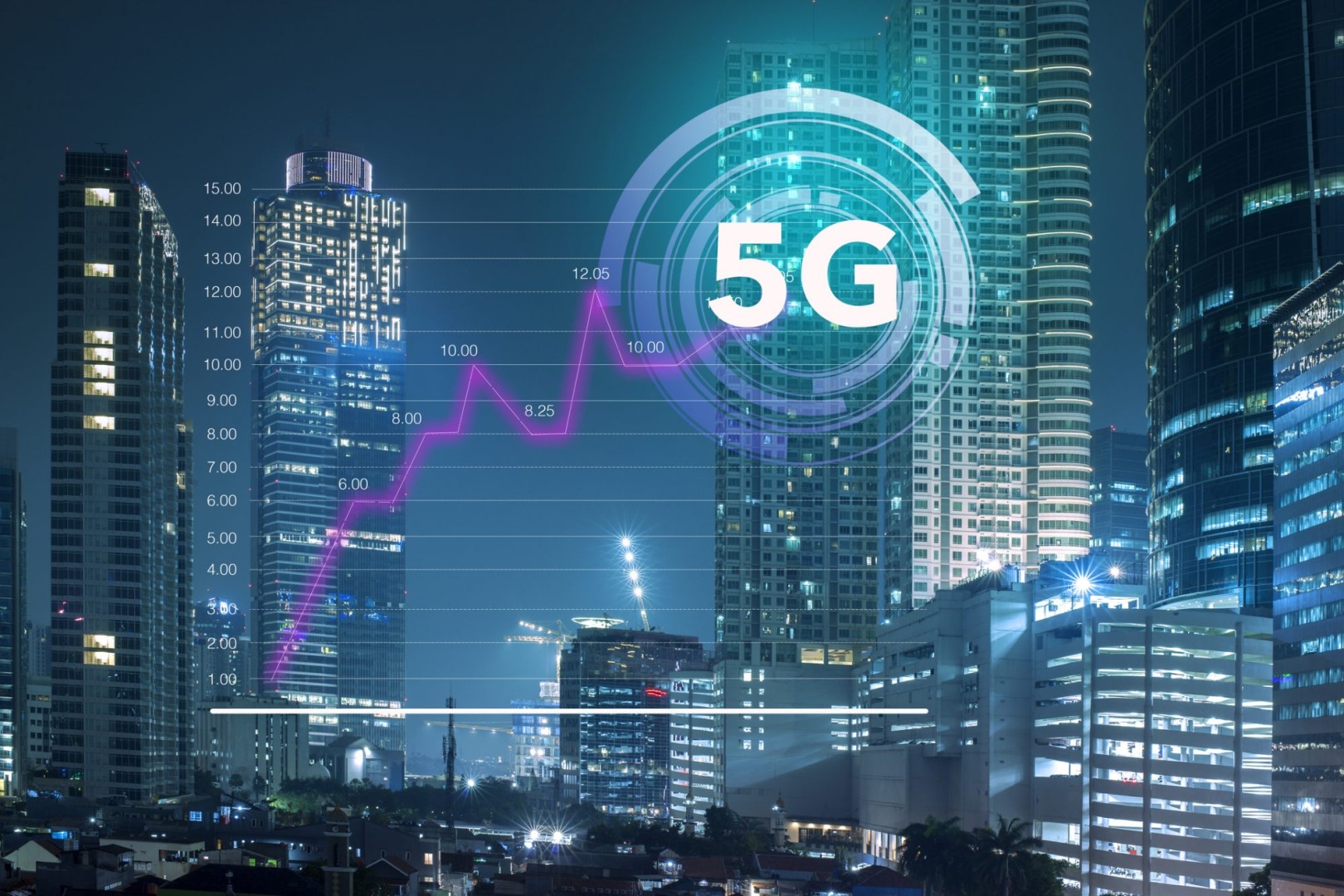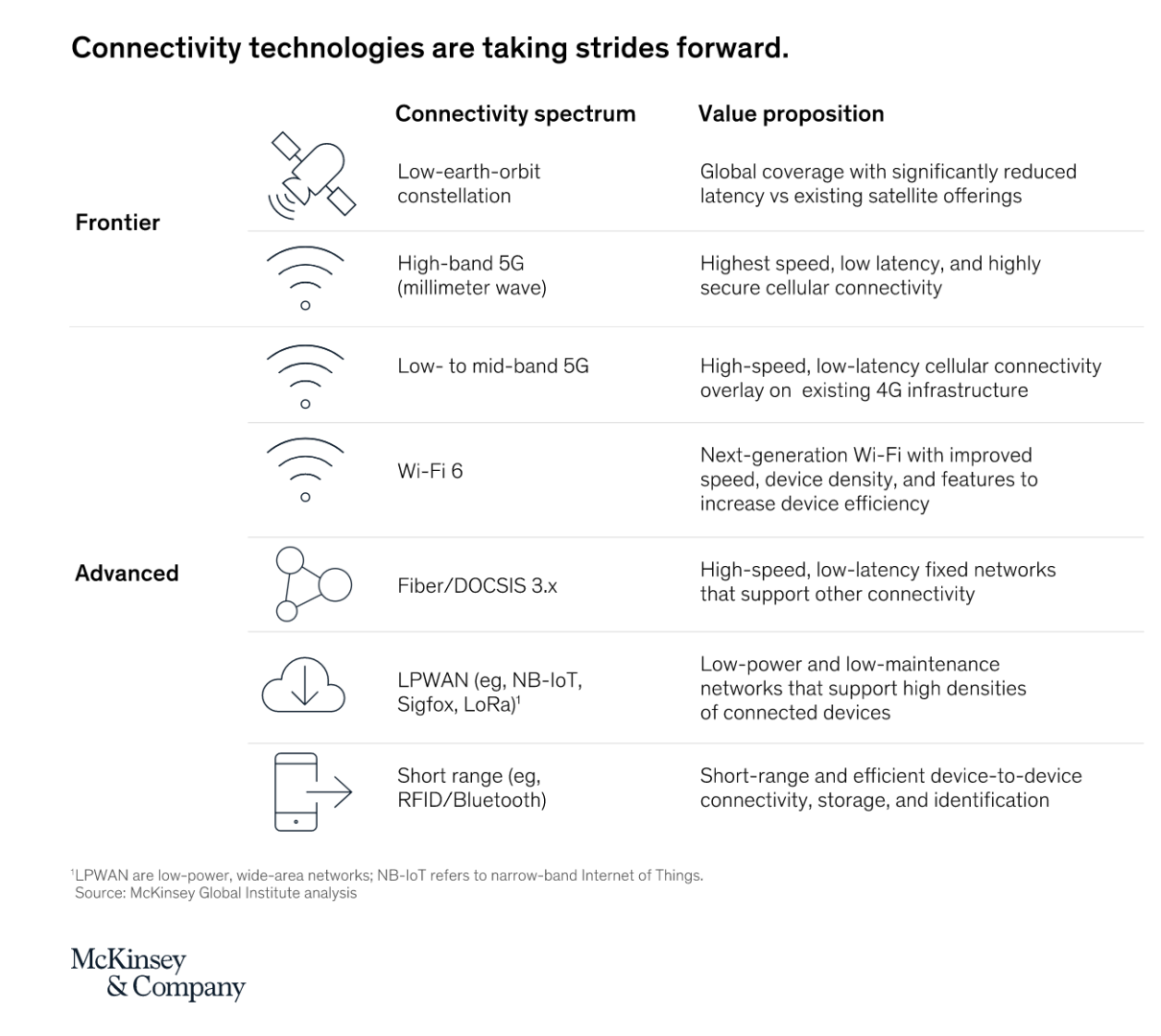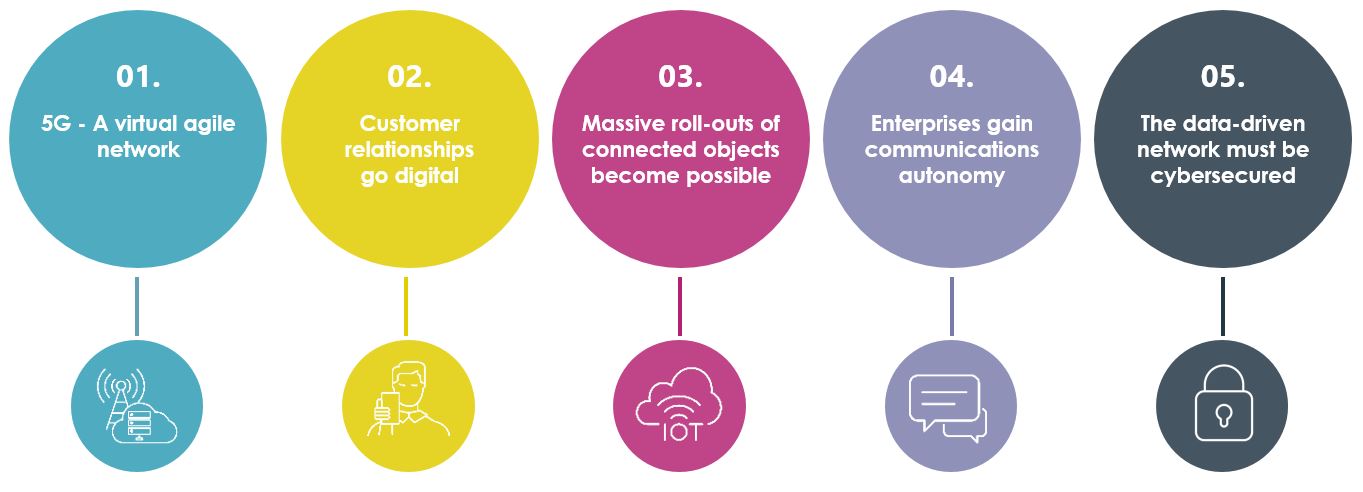TECHNOLOGY
The Role of 5G in Enabling the Next Generation of Smart Cities

5G can enhance the quality and performance of urban services in smart cities.
As cities become more crowded and complex, the need for efficient, sustainable, and smart solutions becomes increasingly pressing. With the arrival of the fifth-generation wireless network (5G), cities now have a powerful tool to revolutionize how they operate and serve their citizens. The high-speed and low-latency capabilities of 5G can enable a range of smart city applications, from traffic management and public safety to healthcare and environmental monitoring. In this article, we explore the role of 5G in enabling the next generation of smart cities, including the benefits and challenges of deploying 5G networks, the potential use cases for smart cities, and the key factors that will determine their success.
Benefits of 5G for Smart Cities
The benefits of 5G for smart cities are numerous and significant. 5G technology has the potential to improve public security and safety significantly. Using the fast and responsive 5G network, smart city systems can collect and analyse massive amounts of data from various sources, such as video security cameras, intelligent traffic lights, and other IoT devices.

Source: McKinsey & Company
First and foremost, 5G networks can provide faster and more reliable connectivity than previous generations of wireless networks. This means that cities can collect and analyze real-time data from a wide range of sensors and devices, enabling them to make more informed decisions about how to allocate resources and respond to emergencies. For example, 5G can be used to monitor traffic patterns and adjust traffic signals in real-time to optimize the flow of vehicles and reduce congestion.
Another major benefit of 5G for smart cities is its low latency, or the time it takes for data to be transmitted from one device to another. With 5G, latency can be reduced to just a few milliseconds, making it possible to support applications that require near-instantaneous responses. This is particularly important for applications like autonomous vehicles, which rely on real-time data from sensors to navigate safely and efficiently.
Finally, 5G networks can support a much larger number of connected devices than previous generations of wireless networks. This is crucial for smart cities, which rely on a vast network of sensors and devices to collect data and provide services to citizens. With 5G, cities can support thousands of connected devices per square kilometer, enabling them to monitor everything from air quality and water levels to parking availability and waste management.
Challenges of Deploying 5G Networks in Smart Cities

Source: Thales
Despite the numerous benefits of 5G for smart cities, there are also several challenges to deploying these networks. One of the biggest challenges is the cost of infrastructure. Building out a 5G network requires significant investment in new infrastructure, including small cells, fiber-optic cables, and other equipment. This can be prohibitively expensive for many cities, particularly those with limited budgets.
Another challenge is the need to ensure equitable access to 5G networks. While 5G has the potential to revolutionize how cities operate and serve their citizens, it is important to ensure that these benefits are distributed fairly across all communities. This means addressing the digital divide and ensuring that all citizens, regardless of their socioeconomic status, have access to high-speed, reliable connectivity.
Potential Use Cases for Smart Cities
Despite these challenges, the potential use cases for smart cities are vast and varied. Here are just a few examples of how 5G can enable the next generation of smart cities:
-
Traffic management: 5G can be used to monitor traffic patterns and adjust traffic signals in real-time to optimize the flow of vehicles and reduce congestion.
-
Public safety: 5G can be used to support real-time video surveillance and emergency response systems, enabling first responders to react quickly and effectively in the event of an emergency.
-
Healthcare: 5G can be used to support remote patient monitoring and telemedicine, enabling patients to receive high-quality care from the comfort of their own homes.
-
Environmental monitoring: 5G can be used to monitor air and water quality, as well as other environmental factors like noise pollution and temperature.
-
Energy management: 5G can be used to optimize energy consumption by allowing real-time monitoring of energy usage and facilitating the integration of renewable energy sources into the power grid.
With 5G-powered sensors and IoT devices, cities can collect data on energy consumption patterns and use AI algorithms to optimize energy distribution and reduce waste. In addition, 5G can enable the development of virtual power plants that use distributed energy resources such as rooftop solar panels, wind turbines, and battery storage to provide reliable and sustainable energy to the city. This can lead to significant cost savings, increased energy efficiency, and reduced carbon emissions.
5G technology is expected to transform the way we live and work, and smart cities are a perfect example of how this transformation is already underway. Smart cities are essentially urban areas that use data and technology to improve the quality of life for their citizens. They incorporate everything from smart transportation and energy systems to advanced healthcare and public safety initiatives. With the implementation of 5G networks, the potential for these cities to become even smarter is enormous.
The Future of 5G and Smart Cities is Very Promising
As more cities around the world continue to adopt smart city technologies, 5G will play an increasingly important role in enabling the next generation of smart cities.

Source: MDPI
With its high-speed data transfer capabilities, low latency, and ability to connect a large number of devices, 5G will be instrumental in powering the next wave of innovation in smart city technology.
One area where 5G is likely to have a significant impact is in transportation. With 5G, autonomous vehicles will be able to communicate with one another and with traffic management systems in real-time, allowing for smoother traffic flow and reducing congestion. This will not only save time for commuters but also reduce carbon emissions and improve air quality.
Another area where 5G will be transformative is in healthcare. With the ability to transmit large amounts of data quickly and reliably, doctors and other healthcare professionals will be able to remotely monitor patients and even perform procedures using robots. This will be particularly important in rural areas where access to healthcare is limited.
5G will also play a crucial role in enabling the next generation of augmented and virtual reality experiences. With its low latency and high bandwidth, 5G will make it possible to stream high-quality, immersive content on mobile devices and wearables, opening up new opportunities for entertainment, education, and training.
The future of 5G and smart cities is bright, with the potential to transform almost every aspect of urban life. However, there are still challenges to be addressed, such as ensuring that the benefits of smart city technologies are equitably distributed and that data privacy and security concerns are addressed. With careful planning and investment, however, the potential benefits of 5G and smart cities are vast, and cities around the world are already beginning to realize them.
TECHNOLOGY
Next-gen chips, Amazon Q, and speedy S3

AWS re:Invent, which has been taking place from November 27 and runs to December 1, has had its usual plethora of announcements: a total of 21 at time of print.
Perhaps not surprisingly, given the huge potential impact of generative AI – ChatGPT officially turns one year old today – a lot of focus has been on the AI side for AWS’ announcements, including a major partnership inked with NVIDIA across infrastructure, software, and services.
Yet there has been plenty more announced at the Las Vegas jamboree besides. Here, CloudTech rounds up the best of the rest:
Next-generation chips
This was the other major AI-focused announcement at re:Invent: the launch of two new chips, AWS Graviton4 and AWS Trainium2, for training and running AI and machine learning (ML) models, among other customer workloads. Graviton4 shapes up against its predecessor with 30% better compute performance, 50% more cores and 75% more memory bandwidth, while Trainium2 delivers up to four times faster training than before and will be able to be deployed in EC2 UltraClusters of up to 100,000 chips.
The EC2 UltraClusters are designed to ‘deliver the highest performance, most energy efficient AI model training infrastructure in the cloud’, as AWS puts it. With it, customers will be able to train large language models in ‘a fraction of the time’, as well as double energy efficiency.
As ever, AWS offers customers who are already utilising these tools. Databricks, Epic and SAP are among the companies cited as using the new AWS-designed chips.
Zero-ETL integrations
AWS announced new Amazon Aurora PostgreSQL, Amazon DynamoDB, and Amazon Relational Database Services (Amazon RDS) for MySQL integrations with Amazon Redshift, AWS’ cloud data warehouse. The zero-ETL integrations – eliminating the need to build ETL (extract, transform, load) data pipelines – make it easier to connect and analyse transactional data across various relational and non-relational databases in Amazon Redshift.
A simple example of how zero-ETL functions can be seen is in a hypothetical company which stores transactional data – time of transaction, items bought, where the transaction occurred – in a relational database, but use another analytics tool to analyse data in a non-relational database. To connect it all up, companies would previously have to construct ETL data pipelines which are a time and money sink.
The latest integrations “build on AWS’s zero-ETL foundation… so customers can quickly and easily connect all of their data, no matter where it lives,” the company said.
Amazon S3 Express One Zone
AWS announced the general availability of Amazon S3 Express One Zone, a new storage class purpose-built for customers’ most frequently-accessed data. Data access speed is up to 10 times faster and request costs up to 50% lower than standard S3. Companies can also opt to collocate their Amazon S3 Express One Zone data in the same availability zone as their compute resources.
Companies and partners who are using Amazon S3 Express One Zone include ChaosSearch, Cloudera, and Pinterest.
Amazon Q
A new product, and an interesting pivot, again with generative AI at its core. Amazon Q was announced as a ‘new type of generative AI-powered assistant’ which can be tailored to a customer’s business. “Customers can get fast, relevant answers to pressing questions, generate content, and take actions – all informed by a customer’s information repositories, code, and enterprise systems,” AWS added. The service also can assist companies building on AWS, as well as companies using AWS applications for business intelligence, contact centres, and supply chain management.
Customers cited as early adopters include Accenture, BMW and Wunderkind.
Want to learn more about cybersecurity and the cloud from industry leaders? Check out Cyber Security & Cloud Expo taking place in Amsterdam, California, and London. Explore other upcoming enterprise technology events and webinars powered by TechForge here.
TECHNOLOGY
HCLTech and Cisco create collaborative hybrid workplaces

Digital comms specialist Cisco and global tech firm HCLTech have teamed up to launch Meeting-Rooms-as-a-Service (MRaaS).
Available on a subscription model, this solution modernises legacy meeting rooms and enables users to join meetings from any meeting solution provider using Webex devices.
The MRaaS solution helps enterprises simplify the design, implementation and maintenance of integrated meeting rooms, enabling seamless collaboration for their globally distributed hybrid workforces.
Rakshit Ghura, senior VP and Global head of digital workplace services, HCLTech, said: “MRaaS combines our consulting and managed services expertise with Cisco’s proficiency in Webex devices to change the way employees conceptualise, organise and interact in a collaborative environment for a modern hybrid work model.
“The common vision of our partnership is to elevate the collaboration experience at work and drive productivity through modern meeting rooms.”
Alexandra Zagury, VP of partner managed and as-a-Service Sales at Cisco, said: “Our partnership with HCLTech helps our clients transform their offices through cost-effective managed services that support the ongoing evolution of workspaces.
“As we reimagine the modern office, we are making it easier to support collaboration and productivity among workers, whether they are in the office or elsewhere.”
Cisco’s Webex collaboration devices harness the power of artificial intelligence to offer intuitive, seamless collaboration experiences, enabling meeting rooms with smart features such as meeting zones, intelligent people framing, optimised attendee audio and background noise removal, among others.
Want to learn more about cybersecurity and the cloud from industry leaders? Check out Cyber Security & Cloud Expo taking place in Amsterdam, California, and London. Explore other upcoming enterprise technology events and webinars powered by TechForge here.
TECHNOLOGY
Canonical releases low-touch private cloud MicroCloud

Canonical has announced the general availability of MicroCloud, a low-touch, open source cloud solution. MicroCloud is part of Canonical’s growing cloud infrastructure portfolio.
It is purpose-built for scalable clusters and edge deployments for all types of enterprises. It is designed with simplicity, security and automation in mind, minimising the time and effort to both deploy and maintain it. Conveniently, enterprise support for MicroCloud is offered as part of Canonical’s Ubuntu Pro subscription, with several support tiers available, and priced per node.
MicroClouds are optimised for repeatable and reliable remote deployments. A single command initiates the orchestration and clustering of various components with minimal involvement by the user, resulting in a fully functional cloud within minutes. This simplified deployment process significantly reduces the barrier to entry, putting a production-grade cloud at everyone’s fingertips.
Juan Manuel Ventura, head of architectures & technologies at Spindox, said: “Cloud computing is not only about technology, it’s the beating heart of any modern industrial transformation, driving agility and innovation. Our mission is to provide our customers with the most effective ways to innovate and bring value; having a complexity-free cloud infrastructure is one important piece of that puzzle. With MicroCloud, the focus shifts away from struggling with cloud operations to solving real business challenges” says
In addition to seamless deployment, MicroCloud prioritises security and ease of maintenance. All MicroCloud components are built with strict confinement for increased security, with over-the-air transactional updates that preserve data and roll back on errors automatically. Upgrades to newer versions are handled automatically and without downtime, with the mechanisms to hold or schedule them as needed.
With this approach, MicroCloud caters to both on-premise clouds but also edge deployments at remote locations, allowing organisations to use the same infrastructure primitives and services wherever they are needed. It is suitable for business-in-branch office locations or industrial use inside a factory, as well as distributed locations where the focus is on replicability and unattended operations.
Cedric Gegout, VP of product at Canonical, said: “As data becomes more distributed, the infrastructure has to follow. Cloud computing is now distributed, spanning across data centres, far and near edge computing appliances. MicroCloud is our answer to that.
“By packaging known infrastructure primitives in a portable and unattended way, we are delivering a simpler, more prescriptive cloud experience that makes zero-ops a reality for many Industries.“
MicroCloud’s lightweight architecture makes it usable on both commodity and high-end hardware, with several ways to further reduce its footprint depending on your workload needs. In addition to the standard Ubuntu Server or Desktop, MicroClouds can be run on Ubuntu Core – a lightweight OS optimised for the edge. With Ubuntu Core, MicroClouds are a perfect solution for far-edge locations with limited computing capabilities. Users can choose to run their workloads using Kubernetes or via system containers. System containers based on LXD behave similarly to traditional VMs but consume fewer resources while providing bare-metal performance.
Coupled with Canonical’s Ubuntu Pro + Support subscription, MicroCloud users can benefit from an enterprise-grade open source cloud solution that is fully supported and with better economics. An Ubuntu Pro subscription offers security maintenance for the broadest collection of open-source software available from a single vendor today. It covers over 30k packages with a consistent security maintenance commitment, and additional features such as kernel livepatch, systems management at scale, certified compliance and hardening profiles enabling easy adoption for enterprises. With per-node pricing and no hidden fees, customers can rest assured that their environment is secure and supported without the expensive price tag typically associated with cloud solutions.
Want to learn more about cybersecurity and the cloud from industry leaders? Check out Cyber Security & Cloud Expo taking place in Amsterdam, California, and London. Explore other upcoming enterprise technology events and webinars powered by TechForge here.
-

 PPC6 days ago
PPC6 days ago19 Best SEO Tools in 2024 (For Every Use Case)
-
SEARCHENGINES7 days ago
Daily Search Forum Recap: April 17, 2024
-
SEARCHENGINES6 days ago
Daily Search Forum Recap: April 18, 2024
-
SEARCHENGINES5 days ago
Daily Search Forum Recap: April 19, 2024
-

 MARKETING6 days ago
MARKETING6 days agoEcommerce evolution: Blurring the lines between B2B and B2C
-

 WORDPRESS5 days ago
WORDPRESS5 days agoHow to Make $5000 of Passive Income Every Month in WordPress
-

 SEO6 days ago
SEO6 days ago2024 WordPress Vulnerability Report Shows Errors Sites Keep Making
-

 WORDPRESS6 days ago
WORDPRESS6 days ago10 Amazing WordPress Design Resouces – WordPress.com News














